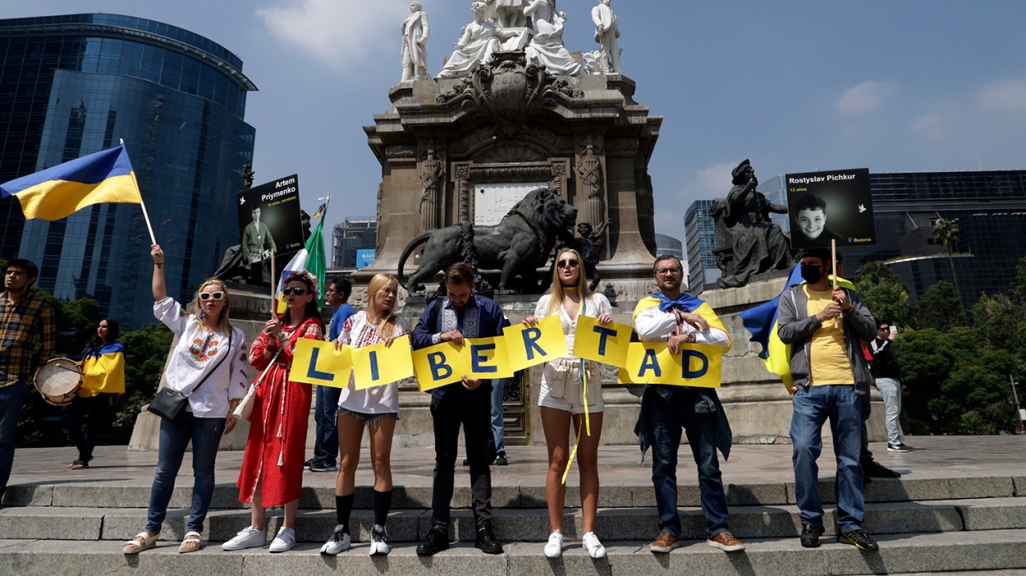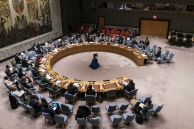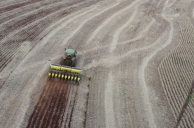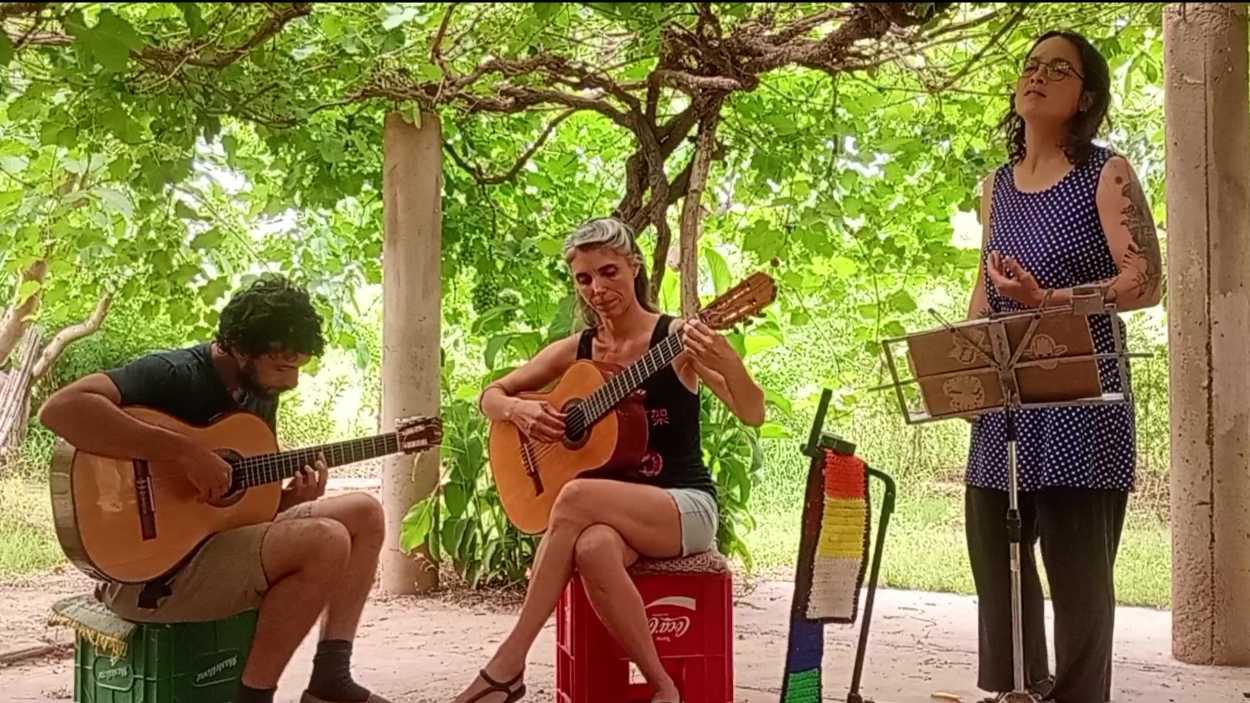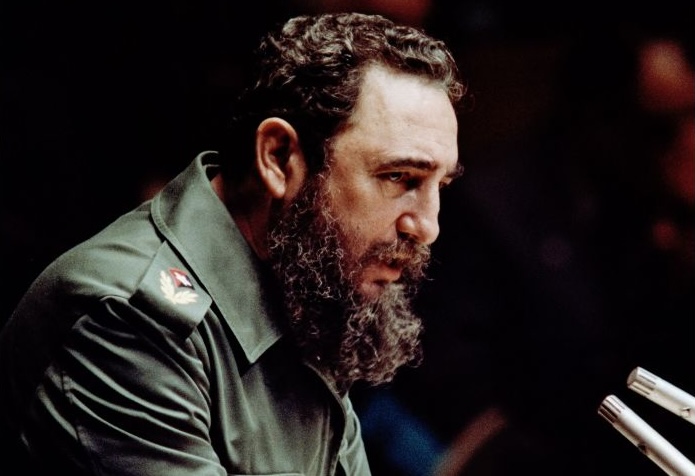One Year in, What Does the Ukraine Conflict Mean for Latin America?
One Year in, What Does the Ukraine Conflict Mean for Latin America?
The region continues to deal with the effects of sanctions against Russia, even as many leaders refuse to strongly condemn Moscow.
Nearly one year ago, Russia launched a military invasion into Ukraine. This breach of national sovereignty became the centerpiece of global affairs in 2022, dominating the agenda in international forums and eliciting strong reactions from leaders worldwide.
Latin America’s response to the invasion was mixed. About half of the region’s presidents did not explicitly call out Russian aggression in the first few weeks of the conflict. And in votes at the Organization of American States (OAS), the UN General Assembly (UNGA), and the UN Human Rights Council, Latin America split, with countries abstaining or even voting against calling out and punishing Russia for their invasion.
But no matter the stance, the region has been affected by the ramifications of the war, which the IMF reports as a major factor depressing global growth prospects. Not only have Russia and Ukraine had to reorient their trade activity, but the United States, Europe, and their allies have implemented a tough sanctions regime on Moscow and its ally Belarus that has scrambled the global economy.
One year into the war, in which ways has Latin America been affected by the Ukraine crisis? And have any of the region’s countries—several of which went through presidential transitions—changed their stance on the conflict? AS/COA Online explores.
See what has been said by countries like UN Security Council members Brazil and Mexico, as well as Moscow allies Cuba and Venezuela.
Latin America lacks deep economic relations to Russia, especially when compared to its relationship with other global heavyweights like the United States and China. In 2020, Russian-Latin American trade was $11.9 billion, accounting for just 0.64 percent of Latin America’s total trade. Paraguay has the highest percentage of its exports going to Russia, Ukraine, and Belarus, at 5.6 percent. Brazil has the highest percentage of its imports coming from the three countries, at just 1.8 percent.
Despite this, only one Latin American country joined the global sanctions against Moscow: Costa Rica. The Central American country instructed its businesses to obey U.S. directives against Russian and Belorussian businesses and individuals, contributing to the patchwork of nearly 10,000 sanctions that began in February last year. Moscow has seen its access to international finance, ports, consumer markets for their goods, and airspace restricted.
But, throughout the war, Latin American countries have kept open their trade ties to Russia, especially for fertilizer, fuel, and grain imports—all of which are important products for the region.
Fertilizer is a particularly sensitive issue for Latin America’s agricultural producers. Brazil, for example, imported 9 million tons, or 25 percent of its fertilizer, from Russia in 2021. Argentina imported over 500,000 tons of fertilizer from Russia in 2021, with Mexico and Peru also representing important markets for the product.
Due to concerns over the global food supply, the United States carved Russian fertilizers out of its sanction regime, allowing them access to global markets. Still, disruptions to supply chains and the blockage of both international finance and insurance underwriting meant that countries anticipated fertilizer supply shocks, plus the European Commission forbade shipments of fertilizer to Asia, Africa, and Latin American through its ports. In May 2022 alone, Russian fertilizer exports fell 24 percent.
Anticipation of fertilizer disruption is why, in February 2022, Brazil’s then-President Jair Bolsonaro visited Russian fertilizer producers to try to ensure a stable supply. In the first five months of 2022, Brazil purchased 16.5 percent more fertilizer from Russia than the year prior. But by May, the final planned fertilizer shipment landed in Brazil, with no further vessels planned at that point.
By September 2022, fertilizer prices were triple what they were in early 2020. Farmers across the region were forced to reduce their plantings to accommodate higher production costs, according to the World Bank. Recognizing the strain, that same month, Russian President Vladimir Putin offered to donate 300,000 tons of fertilizer to the developing world if Europe permitted its export. The UN began to negotiate with Russia and Ukraine over getting more Russian ammonia, a key ingredient in fertilizer, to market. But, as of February 2023, no deal has been reached.
There are concerns that the effects of the ongoing shortage in fertilizer will cause a crisis of food availability in 2023, which could compound existing supply problems in South America related to drought conditions.
Russia’s invasion is complicating the region’s already rocky pandemic economic recovery. The Wall Street Journal’s Samantha Pearson shares the view from Brazil.
Still, the conflict and sanctions regime have brought new economic opportunities for Latin America. For example, the region has been able to fill the export void left by Russian and Ukrainian wheat, which pre-war supplied 30 percent of global product. Countries like Argentina and Brazil have found new markets for exports to northern Africa, for example.
And as Russia has lost oil and gas markets in Europe, it has looked to Latin America as a market. Some in the region were eager to get their hands on the discounted product, especially as diesel and gasoline hit record prices in the summer. During that time, Brazil’s Bolsonaro hammered out a purchase deal with Russia that saw new shipments of diesel arrive in his country in October 2022. In the first 10 months of 2022, Brazil bumped up its import of Russian diesel by 15 percent over the prior year.
In the face of the shifting economic conditions created by the conflict in Ukraine, have Latin America leaders shifted from their initial stance of neutrality and non-intervention? The answer for the most part is no. The region’s leaders have maintained calls for peace, and Mexican President Andrés Manuel López Obrador even tried to present his own peace plan in September 2022 that would have created a mediation committee to pursue a five-year truce to the conflict. Ukrainian officials labeled the plan pro-Russia, though other regional figures, such as Colombian President Gustavo Petro, supported it.
Still, NATO countries, such as the United States and Germany, have continued to try to persuade Latin America to join sanctions regimes or help supply arms to Ukraine. In September 2022, German President Frank-Walter Steinmeier spoke to Mexico’s Senate about abandoning neutrality. Then in October 2022, Ukrainian President Volodymyr Zelensky addressed the OAS, calling for the region to support his country’s fight. This came after Mercosur, the South American trade bloc, denied Zelensky’s request to address the body in July. Both Steinmeier and Zelensky alluded to Latin American historic figures like Simón Bolívar and Benito Juárez in their appeals to get Latin America to punish Russia economically.
But Latin American has largely been unmoved. As Peruvian former President Pedro Castillo explained in his address to the UNGA in September, the economic effects of the war and its related sanctions in Ukraine were hurting the region’s poorest citizens and endangering food security.
And more recent efforts to court the region have shown obstinate positions. For instance, in late January 2023, the new head of the U.S. Military’s Southern Command Laura J. Richardson and German Chancellor Olaf Scholz both urged Latin American countries to join their recent efforts in sending weapons to Ukraine. Richardson specifically urged countries in the region to donate Soviet military equipment they’d purchased in the past to Kyiv.
Calls for weapons donations were rejected by Argentina, Brazil, Chile, and Colombia. Chilean President Gabriel Boric did say his country would send ships to help clear Russian mines in the Black Sea, but only once the conflict ends.
Recent efforts to urge Latin America to do more to resolve the conflict have focused on Brazilian President Luiz Inácio Lula da Silva, inaugurated in January 2023.
Since taking office, Lula has made it clear that he intends to return Brazil to playing a leadership role on the world stage. Some leaders hoped that it would translate to an expanded role in helping resolve the war in Ukraine.
Lula, who met with Putin multiple times during his first period in office (2003–2010), called the leader’s invasion of Ukraine a mistake. On the other hand in an interview in TIME in May, Lula blamed Ukraine, the United States, and NATO for the war, in addition to Russia.
So far, Lula has not wavered much from the stance of his predecessor, as evidenced by his unenthusiastic response to the German chancellor’s request for military support. Though at that meeting, Lula did say he would put trying to resolve the conflict on the agenda of his visit to China in March.







